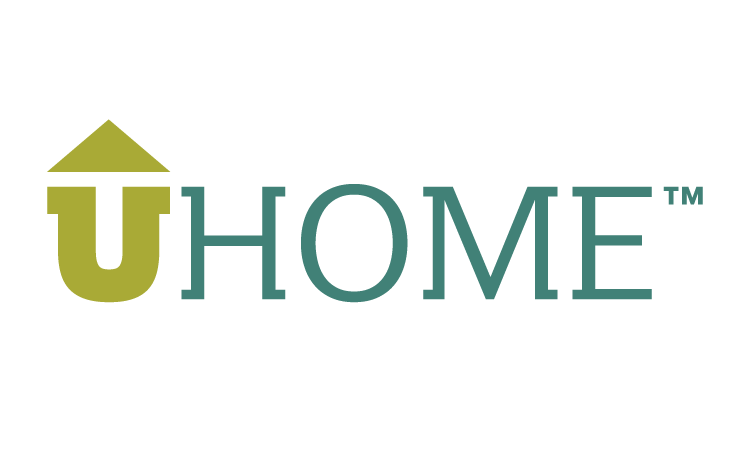Home Safety Assessments: How Occupational Therapists Tailor Environments for Aging in Place
The concept of “home” becomes even more significant as we age; It’s not just a place, it’s a sanctuary of memories and comfort that exudes a sense of safety and peace. However, aging can bring about challenges that make living at home less safe and less accessible. Universal Home Consulting was created with these challenges in mind; Certified Aging In Place Specialists and Occupational Therapists (OTs) can support you and your loved ones with home safety assessments, ensuring that environments are tailored for aging in place.
The Role of Occupational Therapists
Occupational Therapists are healthcare professionals trained to help individuals perform daily activities as independently as possible. They specialize in assessing physical, cognitive, and environmental factors that affect a person’s ability to carry out everyday tasks. When specifically working with aging adults, OTs focus on enhancing their quality of life by recommending strategies and modifications to overcome physical limitations, prevent accidents, and maintain independence. Through personalized evaluations, OTs identify specific needs and collaborate with older adults and their families to implement practical solutions that make their homes safer and more functional.
Fall Prevention
Falls are a leading cause of injury among older adults, making fall prevention a top priority in home safety assessments. OTs use their expertise to identify and mitigate fall risks through various strategies:
Identifying Hazards:
Clutter and Obstacles: Clearing pathways of clutter and ensuring furniture is arranged to allow easy movement.
Flooring: Recommending non-slip mats and removing loose rugs that can cause tripping.
Lighting: Improving lighting in hallways, staircases, and other high-risk areas to ensure visibility.
Adaptive Equipment:
Grab Bars and Handrails: Installing grab bars in bathrooms and handrails on both sides of staircases.
Mobility Aids: Suggesting the use of walkers or canes tailored to the individual's needs.
Exercise and Balance Training:
Encouraging exercises that enhance strength and balance, which can significantly reduce the risk of falls.
Accessibility Modifications
Creating an accessible home environment is vital for maintaining independence as one ages. OTs often recommend a variety of modifications to make daily activities easier and safer:
Entrance and Exit Adjustments:
Ramps and Thresholds: Installing ramps for wheelchair access and reducing high thresholds that can cause trips.
Widening Doorways: Ensuring doorways are wide enough to accommodate wheelchairs or walkers.
Bathroom Modifications:
Walk-in Showers: Replacing bathtubs with walk-in showers to eliminate the need to step over high edges.
Raised Toilet Seats: Installing raised toilet seats to reduce the effort needed to sit and stand.
Kitchen Adaptations:
Lowering Countertops: Adjusting the height of countertops and cabinets for easier access.
Lever Handles: Replacing traditional knobs with lever handles on doors and faucets for easier operation.
Technology Aids
The integration of technology in the home is a newer and effective way to support aging in place. OTs may recommend various technological aids that can enhance safety and independence:
Medical Alert Systems:
Devices that allow individuals to call for help at the push of a button, providing peace of mind in case of emergencies.
Smart Home Devices:
Voice-Activated Assistants: Devices like Amazon Alexa or Google Home can control lights, thermostats, and even call family members.
Automated Lighting: Motion-sensor lights that turn on automatically to prevent falls during nighttime movements.
Monitoring Systems:
Fall Detection: Wearable devices that detect falls and automatically alert emergency services or family members.
Health Monitoring: Tools that track vital signs and send alerts if abnormalities are detected.
Environmental Adjustments
Apart from major modifications, simple environmental adjustments can make a significant difference.
Furniture Arrangement:
Ensuring that frequently used items are within easy reach to avoid unnecessary bending or stretching.
Placing sturdy furniture that can double as support when moving around the house.
Visual Aids:
Using contrasting colors to highlight steps, edges, and doorways for better visibility.
Marking light switches and appliance controls with clear, large print labels.
Collaboration and Resources
Universal Home Consulting doesn’t work alone — they collaborate with contractors, family members, and other healthcare providers to ensure that the modifications are practical and effective. Additionally, numerous organizations offer resources and support for aging in place:
AARP: Provides extensive resources on home modifications and aging in place.
National Institute on Aging: Offers tips and information on home safety for older adults.
Rebuilding Together: A nonprofit organization that provides free home repairs and modifications for older adults in need.
Aging in place is a desirable goal for many older adults, and with the right modifications, it is entirely achievable. Occupational Therapists play a crucial role in this process, bringing their expertise to create safer, more accessible, and comfortable living environments. Through fall prevention strategies, accessibility modifications, and the use of technology aids, OTs ensure that homes are tailored to meet the needs of aging individuals, allowing them to maintain their independence and quality of life.
By addressing these elements, OTs help older adults live safely and comfortably in their beloved homes, proving that with the right support, aging in place is not just a possibility, but a sustainable reality. For more information and resources on home safety assessments and aging in place, visit AARP, National Institute on Aging, and Rebuilding Together.
Through the promotion of independent living, we pave the way for a healthier, happier, and more fulfilling life as we navigate the golden years. U-Home is honored to partner with individuals who wish to design a life at home that feels comfortable and safe. If you want to learn more or schedule a FREE pre-consultation, click here to get in contact with us.
At Universal Home Consulting, we understand the importance of aging in place and helping families feel confident that their loved ones can remain safe and healthy at home. We offer virtual home safety assessments to help families identify potential risks, create a plan to address them, and also provide caregiver coaching and support to help prevent injury and burnout.
